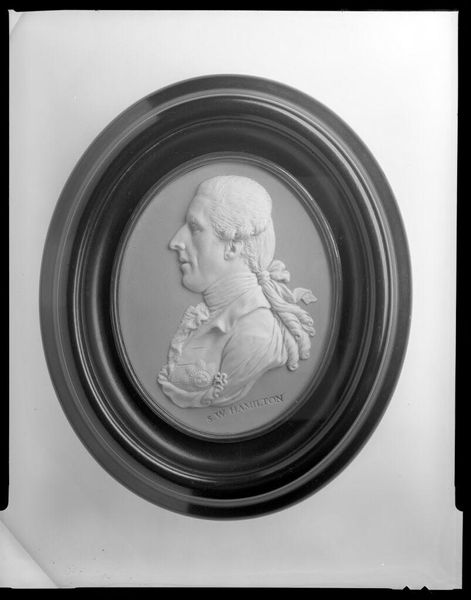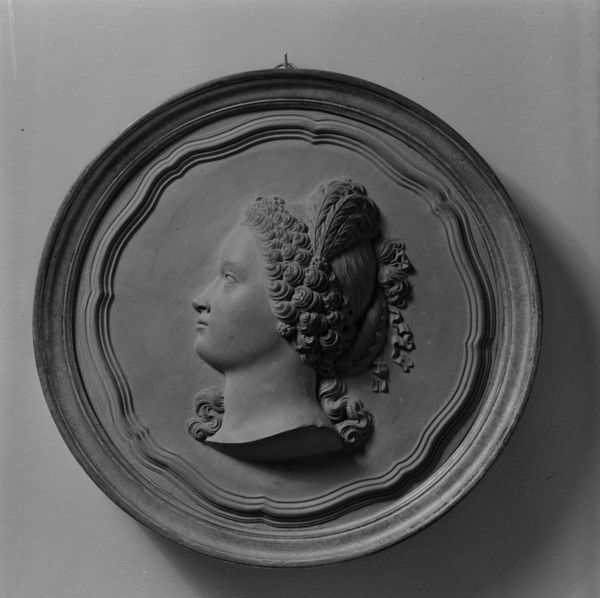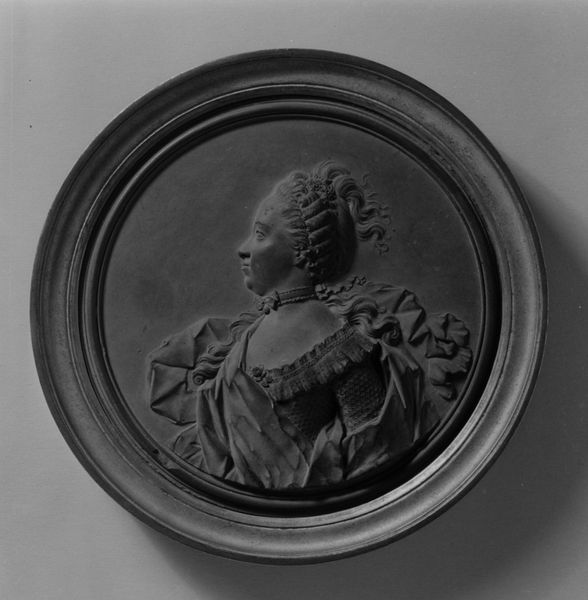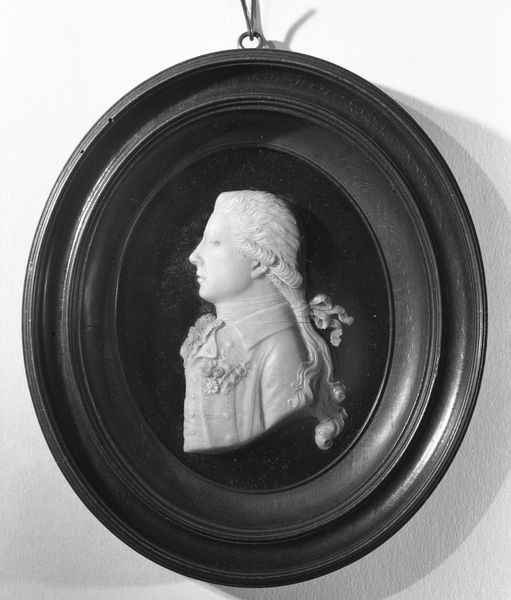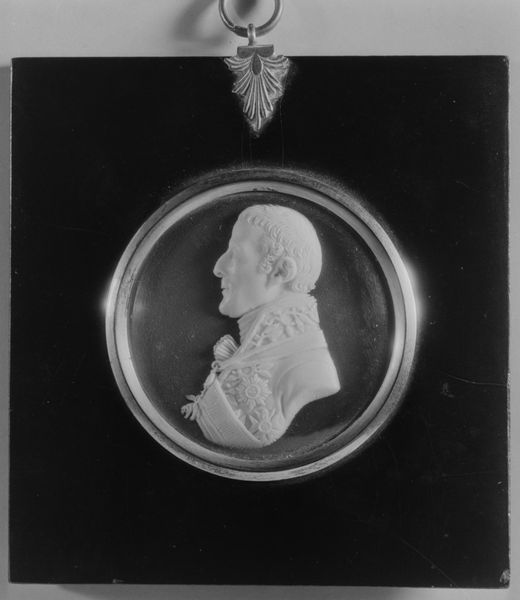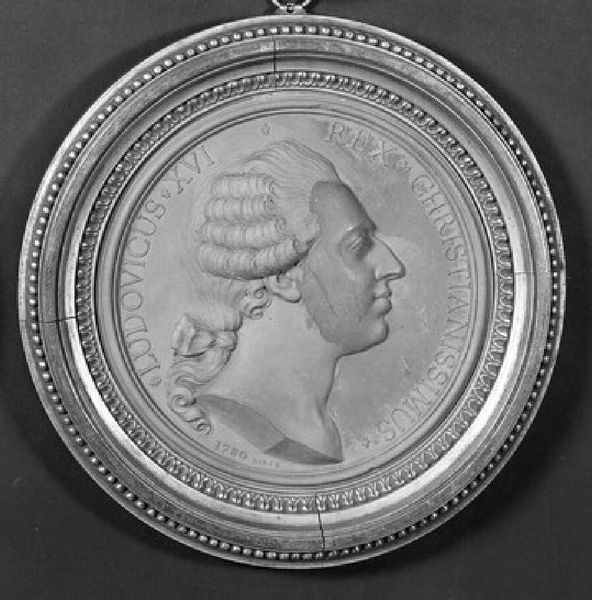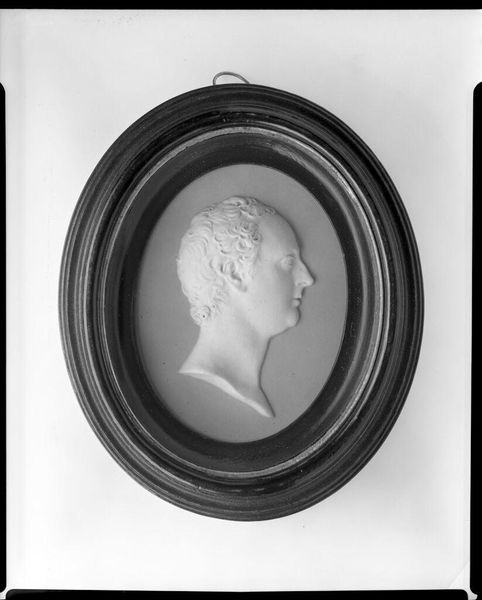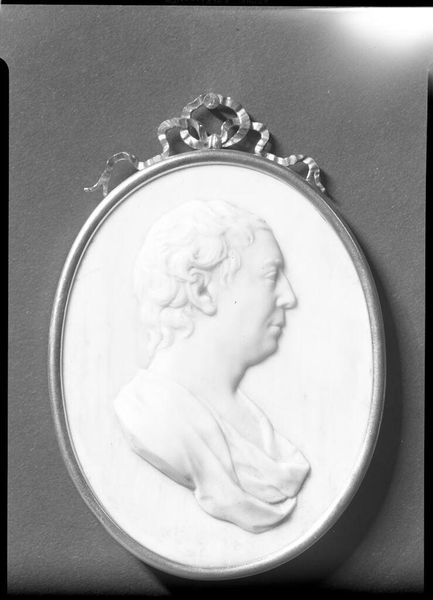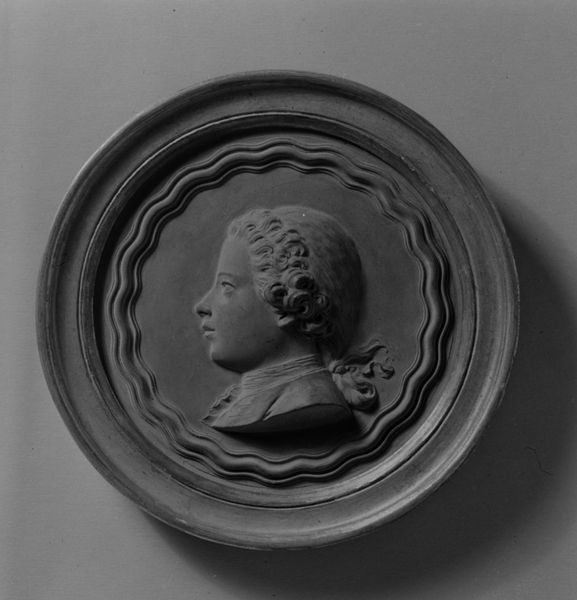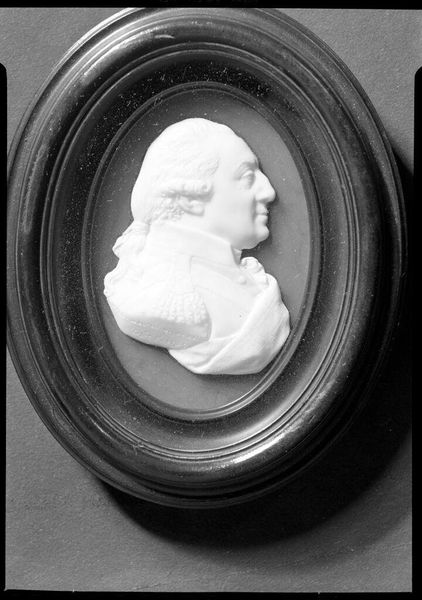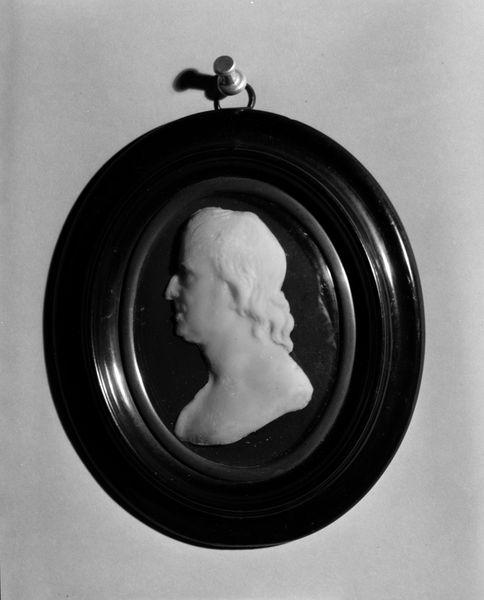
metal, relief, sculpture, wood, marble
#
portrait
#
neoclacissism
#
metal
#
sculpture
#
relief
#
classical-realism
#
11_renaissance
#
black and white theme
#
sculpture
#
black and white
#
men
#
wood
#
history-painting
#
decorative-art
#
marble
#
profile
Dimensions: 7/8 × 3 in. (2.2 × 7.6 cm)
Copyright: Public Domain
Curator: This artwork, a profile of Louis XVI, was created by Philippe Curtius between 1780 and 1795. It’s a marble relief sculpture housed right here at the Metropolitan Museum of Art. Editor: The severe contrast immediately strikes me; the pale figure against the dark round frame gives it an almost ominous feel. What's particularly striking is the detail captured in profile – the shape of his nose, the curl of his hair... and the barest hint of a sneer? Curator: Well, it's certainly an interesting subject, given what awaited Louis XVI at the end of the decade. Curtius's medium, marble, a classical reference, further underscores the pre-revolutionary mindset, echoing idealized forms of antiquity. Editor: Indeed. Marble also connotes permanence, power, yet this profile feels oddly vulnerable. The revolutionary fervor makes it clear his power was anything *but* permanent. What did it mean to portray the King in this specific style at this specific historical moment? Curator: The profile was a standard format for royal portraiture, harking back to ancient coins and cameos – symbols of authority meant to project strength and legitimacy. Curtius would have been deeply entrenched in these representational traditions. Editor: And that very tradition becomes suspect. We look at this marble effigy, this attempt to cement authority in stone, knowing it couldn't prevent revolution. Is this intended as homage, or could the artist have had even the slightest hint of critique within this 'standard' format? It is such a cold and stark way to represent a human being. Curator: We can only speculate on Curtius' personal feelings, of course. His role was that of court artist; dissent would have been incredibly risky. What we see is, on the surface, an embodiment of Neoclassical ideals employed to support royal authority through a particular visual language. Editor: I suppose I can see this as less a symbol of royal strength and more a meditation on power’s fragility and performance—how even the most solid symbols crumble in the face of systemic change and shifting ideologies. The revolution *was* coming for him after all, despite these attempts at immortalization. Curator: Indeed. It certainly makes for a complex viewing experience in hindsight. It encapsulates a very turbulent moment in history and asks us to consider the weight of representation and legacy. Editor: Exactly. Art becomes an uneasy mirror reflecting power dynamics. In viewing this marble figure, we aren't simply admiring technique but actively questioning the foundations on which these figures once stood, or rather, *appeared* to stand.
Comments
No comments
Be the first to comment and join the conversation on the ultimate creative platform.
